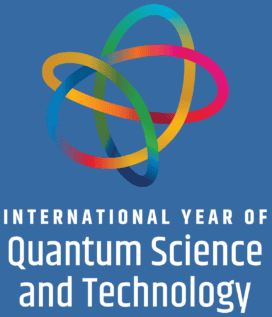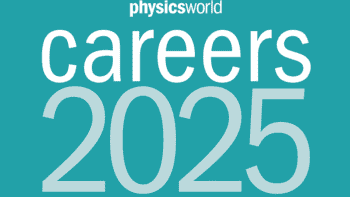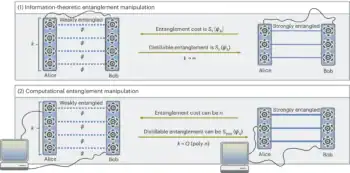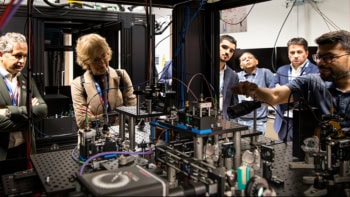
Part of our International Year of Quantum Science and Technology coverage
Quantum physics is full of scientific and philosophical mysteries, the answers to which could well emerge from the field’s commercial applications. Elise Crull (a philosopher), Artur Ekert (an academic) and Stephanie Simmons (an industrialist) examine the complex interplay between applications and fundamentals in conversation with Hamish Johnston

Science and technology go hand in hand but it’s not always true that basic research leads to applications. Many early advances in thermodynamics, for example, followed the opposite path, emerging from experiments with equipment developed by James Watt, who was trying to improve the efficiency of steam engines. In a similar way, much progress in optics and photonics only arose after the invention of the laser.
The same is true in quantum physics, where many of the most exciting advances are occurring in companies building quantum computers, developing powerful sensors, or finding ways to send information with complete security. The cutting-edge techniques and equipment developed to make those advances then, in turn, let us understand the basic scientific and philosophical questions of quantum physics.
Quantum entanglement, for example, is no longer an academic curiosity, but a tangible resource that can be exploited in quantum technology. But because businesses are now applying this resource to real-world problems, it’s becoming possible to make progress on basic questions about what entanglement is. It’s a case of technological applications leading to fundamental answers, not the other way round.
In a recent panel event in our Physics World Live series, Elise Crull (a philosopher), Artur Ekert (an academic) and Stephanie Simmons (an industrialist) came together to discuss the complex interplay between quantum technology and quantum foundations. Elise Crull, who trained in physics, is now associate professor of philosophy at the City University of New York. Artur Ekert is a quantum physicist and cryptographer at the University of Oxford, UK, and founding director of the Center for Quantum Technologies in Singapore. Stephanie Simmons is chief quantum officer at Photonic, co-chair of Canada’s Quantum Advisory Council, and associate professor of physics at Simon Fraser University in Vancouver.
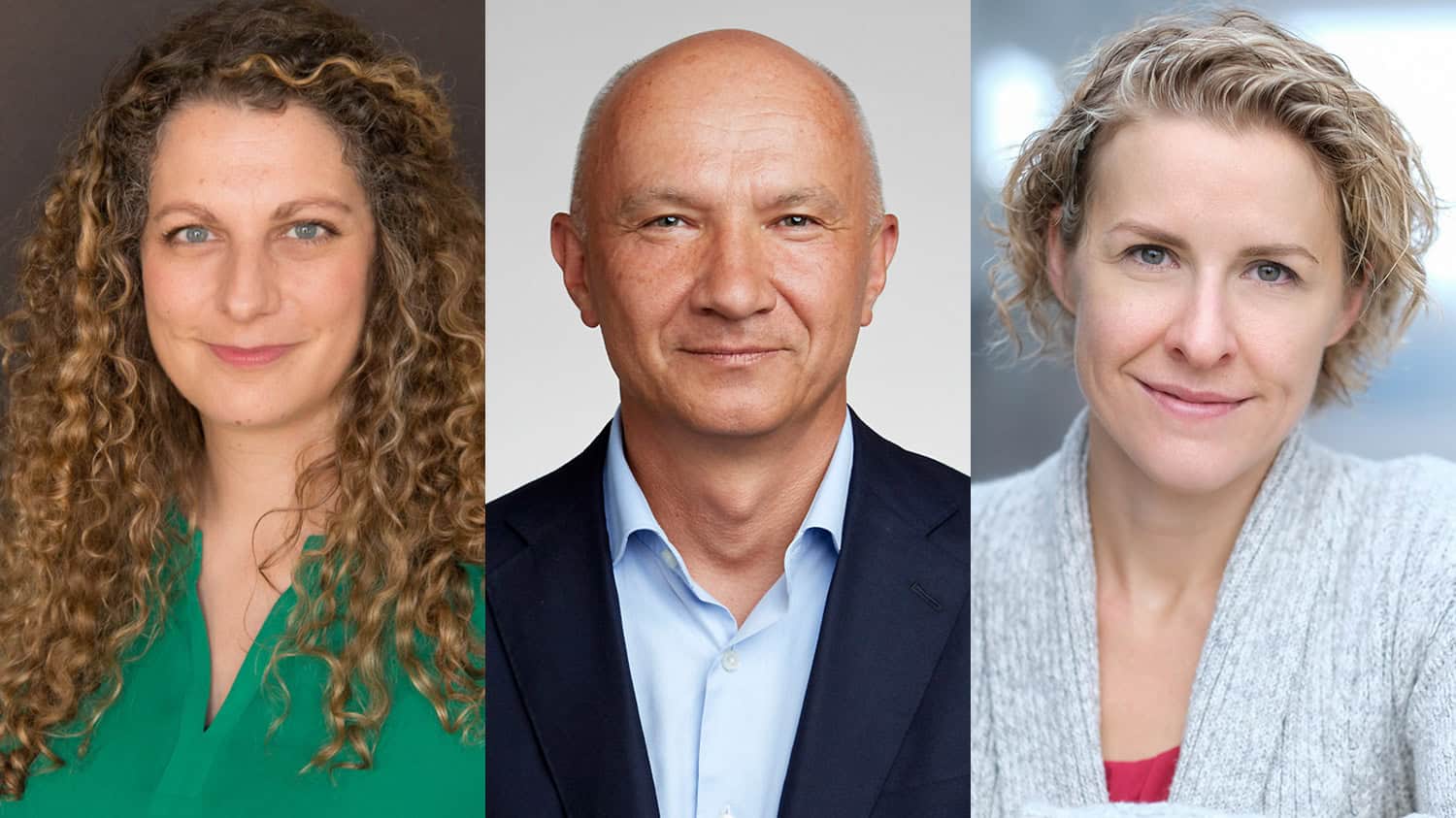
Presented here is an edited extract of their discussion, which you can watch in full online.
Can you describe the interplay between applications of quantum physics and its fundamental scientific and philosophical questions?
Stephanie Simmons: Over the last 20 years, research funding for quantum technology has risen sharply as people have become aware of the exponential speed-ups that lie in store for some applications. That commercial potential has brought a lot more people into the field and made quantum physics much more visible. But in turn, applications have also let us learn more about the fundamental side of the subject.
We’re learning so much at a fundamental level because of technological advances
Stephanie Simmons
They have, for example, forced us to think about what quantum information really means, how it can be treated as a resource, and what constitutes intelligence versus consciousness. We’re learning so much at a fundamental level because of those technological advances. Similarly, understanding those foundational aspects lets us develop technology in a more innovative way.
If you think about conventional, classical supercomputers, we use them in a distributed fashion, with lots of different nodes all linked up. But how can we achieve that kind of “horizontal scalability” for quantum computing? One way to get distributed quantum technology is to use entanglement, which isn’t some kind of afterthought but the core capability.
How do you manage entanglement, create it, distribute it and distil it? Entanglement is central to next-generation quantum technology but, to make progress, you need to break free from previous thinking. Rather than thinking along classical lines with gates, say, an “entanglement-first” perspective will change the game entirely.
Artur Ekert: As someone more interested in the foundations of quantum mechanics, especially the nature of randomness, technology has never really been my concern. However, every single time I’ve tried to do pure research, I’ve failed because I’ve discovered it has interesting links to technology. There’s always someone saying: “You know, it can be applied to this and that.”
Think about some of the classic articles on the foundations of quantum physics, such as the 1935 Einstein–Podolsky–Rosen (EPR) paper suggesting that quantum mechanics is incomplete. If you look at them from the perspective of data security, you realize that some concepts – such as the ability to learn about a physical property without disturbing it – are relevant to cryptography. After all, it offers a way into perfect eavesdropping.
So while I enjoy the applications and working with colleagues on the corporate side, I have something of a love–hate relationship with the technological world.

Elise Crull: These days physicists can test things that they couldn’t before – maybe not the really weird stuff like indefinite causal ordering but certainly quantum metrology and the location of the quantum-classical boundary. These are really fascinating areas to think about and I’ve had great fun interacting with physicists, trying to fathom what they mean by fundamental terms like causality.
Was Schrödinger right to say that it’s entanglement that forces our entire departure from classical lines of thought? What counts as non-classical physics and where is the boundary with the quantum world? What kind of behaviour is – and is not – a signature of quantum phenomena? These questions make it a great time to be a philosopher.
Do you have a favourite quantum experiment or quantum technology that’s been developed over the last few decades?
Artur Ekert: I would say the experiments of Alain Aspect in Orsay in the early 1980s, who built on the earlier work of John Clauser, to see if there is a way to violate Bell inequalities. When I was a graduate student in Oxford, I found the experiment absolutely fascinating, and I was surprised it didn’t get as much attention at the time as I thought it should. It was absolutely mind-blowing that nature is inherently random and refutes the notion of local “hidden variables”.
There are, of course, many other beautiful experiments in quantum physics. There are cavity quantum electrodynamic and ion-trap experiments that let physicists go from controlling a bunch of atoms to individual atoms or ions. But to me the Aspect experiment was different because it didn’t confirm something that we’d already experienced. As a student I remember thinking: “I don’t understand this; it just doesn’t make sense. It’s mind-boggling.”
Elise Crull: The Bell-type experiments are how I got interested in the philosophy of quantum mechanics. I wasn’t around when Aspect did his first experiments, but at the recent Helgoland conference marking the centenary of quantum mechanics, he was on stage with Anton Zeilinger debating the meaning of Bell violations. So, it’s an experiment that’s still unsettled almost 50 years later and we have different stories involving causality to explain it.
The game is to go from a single qubit or small quantum systems to many-body quantum systems and to look at the emergent phenomena there
Elise Crull
I’m also interested in how physicists are finding clever ways to shield systems from decoherence, which is letting us see quantum phenomena at higher and higher levels. It seems the game is to go from a single qubit or small quantum systems to many-body quantum systems and to look at the emergent phenomena there. I’m looking forward to seeing further results.
Stephanie Simmons: I’m particularly interested in large quantum systems, which will let us do wonderful things like error correction and offer exponential speed-ups on algorithms and entanglement distribution for large distances. Having those capabilities will unlock new technology and let us probe the measurement problem, which is the core of so many of the unanswered questions in quantum physics.
Figuring out how to get reliable quantum systems out of noisy quantum systems was not at all obvious. It took a good decade for various teams around the world to do that. You’re pushing the edges of performance but it’s a really fast-moving space and I would say quantum-error correction is the technology that I think is most underappreciated.
How large could a quantum object or system be? And if we ever built it, what new fundamental information about quantum mechanics would it tell us?
Artur Ekert: Technology has driven progress in our understanding of the quantum world. We’ve gone from being able to control zillions of atoms in an ensemble to just one but the challenge is now to control more of them – two, three or four. It might seem paradoxical to have gone from many to one and back to many but the difference is that we can now control those quantum states. We can engineer those interactions and look at emerging phenomena. I don’t believe there will be a magic number where quantum will stop working – but who knows? Maybe when we get to 42 atoms the world will be different.
Elise Crull: It depends what you’re looking for. To detect gravitational waves, LIGO already uses Weber bars, which are big aluminium rods – weighing about a tonne – that vibrate like quantum oscillators. So we already have macroscopic systems that need to be treated quantum mechanically. The question is whether you can sustain entanglement longer and over greater distance.
What are the barriers to scaling up quantum devices so they can be commercially successful?
Stephanie Simmons: To unleash exponential speed-ups in chemistry or cybersecurity, we will need quantum computers with 400 to 2000 application-grade logical qubits. They will need to perform to a certain degree of precision, which means you need error correction. The overheads will be high but we’ve raised a lot of money on the assumption that it all pans out, though there’s no reason to think there’s a limit.
I don’t feel like there’s anything that would bar us from hitting that kind of commercial success. But when you’re building things that have never been built before, there are always “unknown unknowns”, which is kind of fun. There’s always the possibility of seeing some kind of interesting emergent phenomenon when we build very large quantum systems that don’t exist in nature.

Artur Ekert: To build a quantum computer, we have to create enough logical qubits and make them interact, which requires an amazing level of precision and degree of control. There’s no reason why we shouldn’t be able to do that, but what would be fascinating is if – in the process of doing so – we discovered there is a fundamental limit.
While I support all efforts to build quantum computers, I’d almost like them to fail because we might then discover something that refutes quantum physics
Artur Ekert
So while I support all efforts to build quantum computers, I’d almost like them to fail because we might then discover something that refutes quantum physics. After all, building a quantum computer is probably the most complicated and sophisticated experiment in quantum physics. It’s more complex than the whole of the Apollo project that sent astronauts to the Moon: the degree of precision of every single component that is required is amazing.
If quantum physics breaks down at some point, chances are it’ll be in this kind of experiment. Of course, I wish all my colleagues investing in quantum computing get a good return for their money, but I have this hidden agenda. Failing to build a quantum computer would be a success for science: it would let us learn something new. In fact, we might even end up with an even more powerful “post-quantum” computer.
Surely the failure of quantum mechanics, driven by those applications, would be a bombshell if it ever happened?
Artur Ekert: People seeking to falsify quantum prediction are generally looking at connections between quantum and gravity so how would you be able to refute quantum physics with a quantum computer? Would it involve observing no speed-up where a speed-up should be seen, or would it be failure of some other sort?
My gut feeling is make this quantum experiment as complex and as sophisticated as you want, scale it up to the limits, and see what happens. If it works as we currently understand it should work, that’s fine, we’ll have quantum computers that will be useful for something. But if it doesn’t work for some fundamental reason, it’s also great – it’s a win–win game.
Are we close to the failure of quantum mechanics?
Elise Crull: I think Arthur has a very interesting point. But we have lots of orders of magnitude to go before we have a real quantum computer. In the meantime, many people working on quantum gravity – whether string theory or canonical quantum gravity – are driven by their deep commitment to the universality of quantization.
There are, for example, experiments being designed by some to disprove classical general relativity by entangling space–time geometries. The idea is to kick out certain other theories or find upper and lower bounds on a certain theoretical space. I think we will make a lot of progress by not by trying to defeat quantum mechanics but to look at the “classicality” of other field theories and try to test those.
How will quantum technology benefit areas other than, say, communication and cryptography?
Stephanie Simmons: History suggests that every time we commercialize a branch of physics, we aren’t great at predicting where that platform will go. When people invented the first transistor, they didn’t anticipate the billions that you could put onto a chip. So for the new generation of people who are “quantum native”, they’ll have access to tools and concepts with which they’ll quickly become familiar.
You have to remember that people think of quantum mechanics as counterintuitive. But it’s actually the most self-consistent set of physics principles. Imagine if you’re a character in a video game and you jump in midair; that’s not reality, but it’s totally self-consistent. Quantum is exactly the same. It’s weird, but self-consistent. Once you get used to the rules, you can play by them.
I think that there’s a real opportunity to think about chemistry in a much more computational sense. Quantum computing is going to change the way people talk about chemistry. We have the opportunity to rethink the way chemistry is put together, whether it’s catalysts or heavy elements. Chemicals are quantum-mechanical objects – if you had 30 or 50 atoms, with a classical computer it would just take more bits than there are atoms in the universe to work out their electronic structure.
Has industry become more important than academia when it comes to developing new technologies?
Stephanie Simmons: The grand challenge in the quantum world is to build a scaled-up, fault-tolerant, exponentially sped-up quantum system that could simultaneously deliver the repeaters we need to do all the entanglement distribution technologies. And all of that work, or at least a good chunk of it, is in companies. The focus of that development has left academia.
Industry is the most fast-moving place to be in quantum at the moment, and things will emerge that will surprise people
Stephanie Simmons
Sure, there are still contributions from academia, but there is at least 10 times as much going on in industry tackling these ultra-complicated, really complex system engineering challenges. In fact, tackling all those unknown unknowns, you actually become a better “quantum engineer”. Industry is the most fast-moving place to be in quantum at the moment, and things will emerge that will surprise people.

Artur Ekert: We can learn a lot from colleagues who work in the commercial sector because they ask different kinds of questions. My own first contact was with John Rarity and Paul Tabster at the UK Defence Evaluation and Research Agency, which became QinetiQ after privatization. Those guys were absolutely amazing and much more optimistic than I was about the future of quantum technologies. Paul in particular is an unsung hero of quantum tech. He showed me how you can think not in terms of equations, but devices – blocks you can put together, like quantum LEGO.

Don’t have a PhD? The quantum industry still wants you
Over time, I saw more and more of my colleagues, students and postdocs going into the commercial world. Some even set up their own companies and I have a huge respect for my colleagues who’ve done that. I myself am involved with Speqtral in Singapore, which does satellite quantum communication, and I’m advising a few other firms too.
Most efforts to build quantum devices are now outside academia. In fact, it has to be that way because universities are not designed to build quantum computers, which requires skills and people not found in a typical university. The only way to work out what quantum is good for is through start-up companies. Some will fail; but some will survive – and the survivors will be those that bet on the right applications of quantum theory.
What technological or theoretical breakthrough do you most hope to see that make the biggest difference?
Elise Crull: I would love someone to design an experiment to entangle space–time geometries, which would be crazy but would definitely kick general relativity off the table. It’s a dream that I’d love to see happen.
Stephanie Simmons: I’m really keen to see distributed logical qubits that are horizontally scalable.
Artur Ekert: On the practical side, I’d like to see real progress in quantum-error-correcting codes and fault-tolerant computing. On the fundamental side, I’d love experiments that provide a better understanding of the nature of randomness and its links with special relativity.
This article forms part of Physics World‘s contribution to the 2025 International Year of Quantum Science and Technology (IYQ), which aims to raise global awareness of quantum physics and its applications.
Stayed tuned to Physics World and our international partners throughout the year for more coverage of the IYQ.
Find out more on our quantum channel.
